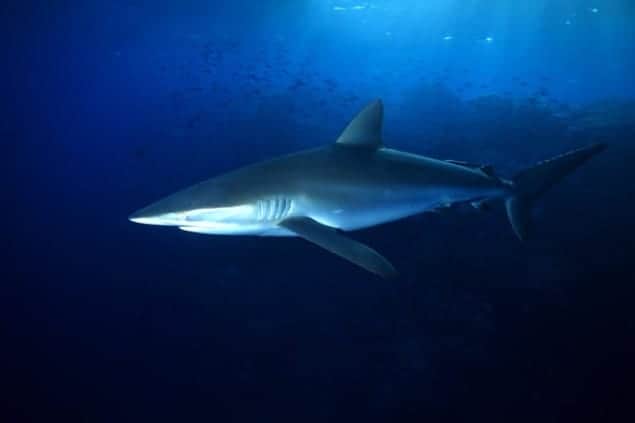
They were menacing enough before, but how would you feel if you knew sharks were employing advanced mathematical concepts in their hunt for the kill? Well, this is the case, according to new research, which has tracked the movement of these marine predators along with a number of other species as they foraged for prey in the Pacific and Atlantic oceans. The results showed that these animals hunt for food by alternating between Brownian motion and Lévy flights, depending on the scarcity of prey.
Lévy flight is a special class of movement characterized by many small steps punctuated by longer relocations. As the patterns show little invariance over a range of different scales, the processes associated with these movements are closely linked with fractal geometry. For instance, it has been suggested that the colourful squiggles that characterize the work of Jackson Pollock, the celebrated abstract painter, were created as his brush took a number of Lévy flights.
For the past decade, several biologists have been claiming that certain animals may also be using Lévy flights to maximize their chances of encountering prey when there is not much choice on offer. The suggestion is that they revert to this from the more random, Brownian, motion that they follow when prey is available in abundance. This hypothesis, however, has never been tested on wild animals, and it is difficult to separate the movement of animals into its different phases, which also include resting and migration.
Over 12 million movements
In new research, David Sims at the Marine Biological Association Laboratory in Plymouth, UK, working with colleagues in Europe and the US, has carried out the first large-scale survey to track the movement of foraging marine predators. Sims’ team attached electronic tags to animals from 14 different species including silky sharks (Carcharhinus falciformis) and yellowfin tuna (Thunnus albacares). 55 individuals were tracked over 12 million movements in the north-east Atlantic and the eastern and northern Pacific.
By analysing the results as a time series, the researchers were able to break down the results into sections that showed more consistent behaviour than the whole. They found that found that the sharks, tuna, billfish and ocean sunfish showed movement patterns well approximated by a Lévy walk, but that they also showed Brownian-type motion. Closer analysis revealed that individuals were switching between Lévy and Brownian movements, consistent with the idea that predators adjust their movement depending on the abundance of prey.
“We used the most reliable and robust statistical analyses on the largest data set yet analysed in this way,” Sims told physicsworld.com.
Managing stocks more effectively
“The results show that to a certain degree the movements of animals are predictable in relation to habitat types they encounter. In the case of fish, we think this will help parameterize a new wave of spatially structured population models that will help us to manage stocks more effectively in the face of overfishing and climate change, for example,” says Sims.
But despite the scale of the research, not all researchers are convinced that the research provides a particularly complete picture of marine foraging. “In this study predators are considered as fully stupid, unable to process environmental information and to act accordingly,” says Simon Benhamou, a marine ecologist at the Center for Functional and Evolutionary Ecology in France. Benhamou feels that future studies should take a more integrated approach including neuroscience, ethology and behavioural ecology.
Sims and his team intend to develop their research by tracking the foraging paths of other marine species, lower down the food chain, including octopuses and marine snails.
This research is published in Nature.



